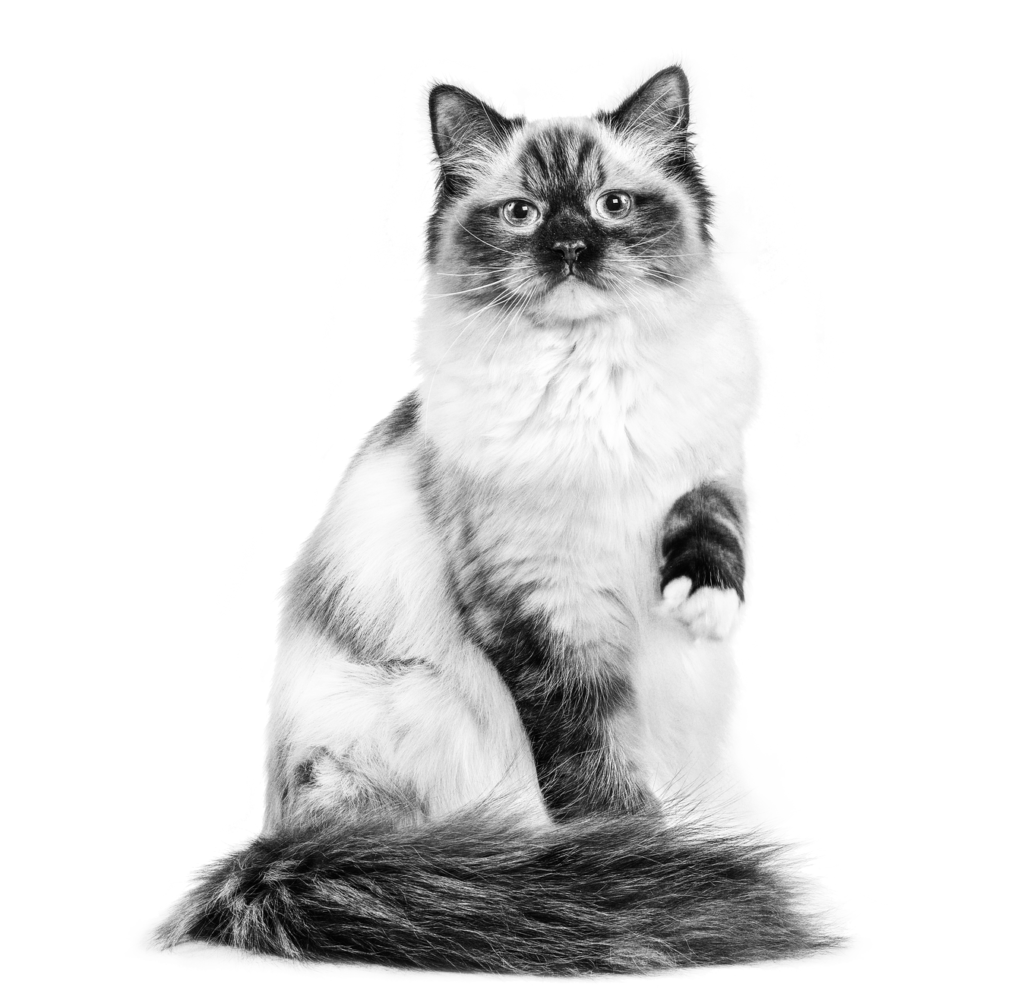 The Ragdoll is a loving, quiet breed with a very laid-back disposition. They are very sociable and love to be with owners and even household guests.
The Ragdoll is a loving, quiet breed with a very laid-back disposition. They are very sociable and love to be with owners and even household guests.
Ragdolls are known for their tolerant attitudes towards other animals and they are especially good with children. They are often compared to dogs because of their friendliness and intelligence.
Their activity level is moderate and limited to a few minutes of active play a day. By far they prefer to play while lying on their backs.
Read on to learn more Ragdoll facts and discover what makes this breed unique.
Ragdoll facts
- Country of origin: United States
- Ragdoll size category: Large
- Coat length: Medium
- Average life expectancy: 12 – 17 years
Ragdoll key characteristics:
- Needs regular grooming
- Patient with children and other animals
- A laid back personality
The Ragdoll’s history & origin
The Ragdoll’s origin dates back to the early 1960’s by Ann Baker. One of the cats she bred was a white, long-haired domestic called Josephine. Other cats used in the breeding programme were a seal point male, possibly a Birman cross, and a solid black cat.
Because of their docile temperament and the way the cats would go limp in the arms of anybody who picked them up, Ms Baker decided to call them Ragdolls.
In 1975, other breeders – notably Denny and Laura Dayton – developed the breed further, with the aim of getting it recognised by the major cat fanciers in the U.S.A.
Life story
Find out how to care for the Ragdoll in each stage of its life.
Ragdoll kittens
The Ragdoll’s striking blue eyes are one of their most recognised features, but another thing they are known for is their playful, friendly nature.
It is one of the largest of the cat breeds and takes up to four years to reach full maturity. That being said, the majority of their growth occurs in the first year of their life, and the subsequent years are dedicated to building muscle to support the Ragdoll’s size.
Ragdoll kittens respond well to positive reinforcement, quickly learning to use litter trays, scratching posts, and in some cases, even learning how to play games like fetch with their owners.
These kittens are incredibly loving. Even at a young age they will greet guests to their home with affection, allowing themselves to be cradled on their backs or curling into peoples’ laps.
Thanks to their gentle, sociable nature, Ragdoll kittens are patient with other household pets; including dogs, birds and small animals.
Perfect product for your young Ragdoll’s diet: ROYAL CANIN®’s Feline Health Nutrition Kitten
Ragdoll adults
Often described as alarmingly beautiful, the Ragdoll is sweet natured and stunning to look at. Their silky mid length coats can be found in a variety of colours and patterns.
Average adult Ragdoll weight:
Male weight: 5 – 9kg
Female weight: 4 – 6kg
Ragdolls are not particularly agile cats, and they are not always interested in the outside world. Their clumsiness means they are not known as great hunters so they should be encouraged to exercise in other ways to help reduce the risk of weight gain and to keep them healthy.
For your Ragdoll, grooming them regularly keeps their semi-long silky coat healthy and removes mats and tangles.
Perfect product for your adult Ragdoll’s diet: ROYAL CANIN®’s Feline Breed Nutrition Ragdoll Adult
Health and sensitivities
It is important to know how to properly care for this breed of cat in order to support your Ragdoll’s health at every stage of their life.
Read on to find out more about this breed’s sensitivities and how they can affect it.
Coat health
This breed’s silky, semi-long coat means that your Ragdoll’s grooming sessions should be regular in order to keep its coat in peek condition – this is especially true during your Ragdoll’s shedding periods.
This includes eliminating mats and tangles and limiting the amount of moulted hair swallowed by the cat during grooming which can lead to hairball concerns.
Below the coat also lies a sensitive skin and so grooming must be gentle and any mats removed with care. The skin and coat is constantly changing and as such is greedy for nutrition. The Ragdoll’s diet must contain quality proteins and a supply of omega 3 and 6 fatty acids to support their nutritional needs.
A dull coat or poor skin condition could be a sign of an under lying health concern.
Cardiac health
The cardiac condition Hypertrophic Cardiomyopathy can be a concern for this breed of cat, this is another reason why – despite the Ragdoll’s size – they should not be allowed to become over weight.
A diet which includes taurine and EPA/DHA helps to maintain healthy cardiac function.
Ageing
The Ragdoll’s calm nature is known to last well into old age. That being said, a Ragdoll’s health and nutritional needs will change as they grow older.
It is a good idea to arrange regular check-ups with a vet at this stage, as they will be able to advise on any nutritional changes or health problems that ageing may bring.
Perfect product for your ageing Ragdoll’s diet: ROYAL CANIN®’s Feline Health Nutrition Senior Ageing 12+ or Senior Ageing Sterilised 12+